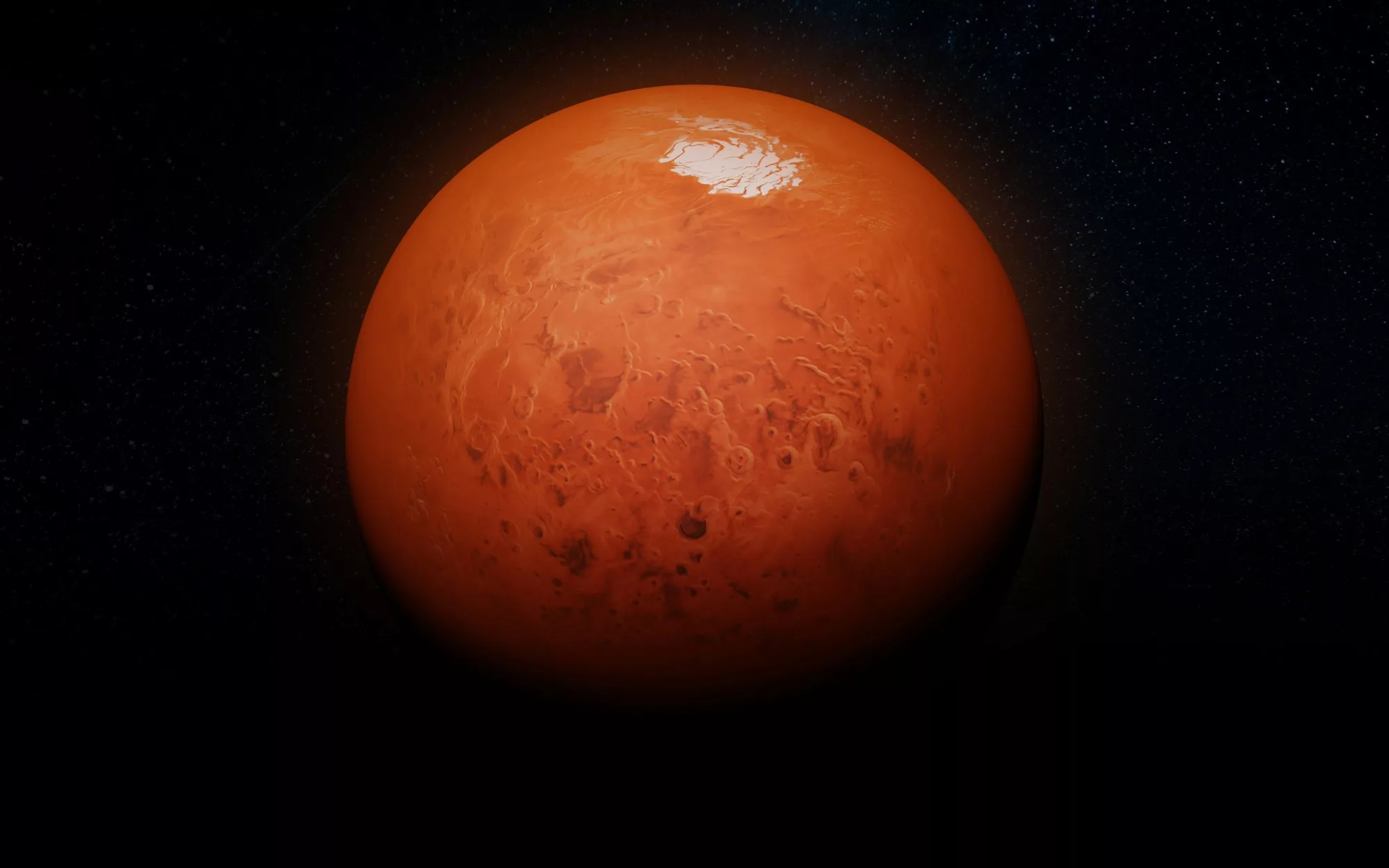Mars has captured the human imagination for centuries. Known as the “Red Planet,” it has been a symbol of exploration, mystery, and the possibility of life beyond Earth. As our own planet faces increasing challenges such as climate change, overpopulation, and resource depletion, the idea of colonizing and transforming Mars into a second home has shifted from science fiction to a serious scientific goal. The process of terraforming—modifying a planet’s environment to make it habitable for humans—is one of the most ambitious concepts ever proposed, and Mars is the most promising candidate for this endeavor.
Terraforming Mars would involve creating an Earth-like atmosphere, warming its surface, and introducing water and life. These changes would allow humans to live without spacesuits, grow crops, and build thriving communities. However, the challenges are immense, and the scientific, technological, and ethical hurdles are unlike anything humanity has ever faced. In this article, we’ll explore the reasons why Mars is a target for terraforming, the potential methods to achieve it, the obstacles we face, and how close we are to turning this vision into reality.
Why Mars? The Case for Terraforming the Red Planet
Mars: The Most Viable Candidate
Mars stands out among all the planets in our solar system as the most viable option for human habitation. While Venus is closer to Earth in size and gravity, its extreme conditions—surface temperatures hot enough to melt lead, a thick atmosphere of carbon dioxide, and clouds of sulfuric acid—make it a hostile environment. In contrast, Mars, though cold and barren, has conditions that are far more manageable and could potentially be transformed to support human life.
Key factors that make Mars a viable candidate for terraforming include its proximity to Earth, evidence of past water, and a day length similar to ours. Its gravity, while lower than Earth’s (about 38%), is higher than that of the Moon, making it a better option for long-term colonization. Mars also has polar ice caps made of water and carbon dioxide, which could be key resources for terraforming efforts.
Evidence of a More Hospitable Past
Billions of years ago, Mars was a very different planet. Scientists believe it had a thicker atmosphere, warmer temperatures, and liquid water flowing across its surface. Ancient river valleys, lake beds, and minerals that form in the presence of water all point to a time when Mars may have been habitable. However, due to the loss of its magnetic field, solar winds stripped away much of its atmosphere, turning it into the cold, dry world we see today.
Understanding the processes that caused Mars to lose its atmosphere and water is crucial for any effort to reverse these changes. If we can identify and replicate the conditions that once made Mars more Earth-like, we might be able to create a habitable environment again.
The Challenges of Terraforming Mars
Thin Atmosphere and Low Pressure
The most immediate challenge is Mars’s thin atmosphere, which is less than 1% the density of Earth’s. Composed mostly of carbon dioxide, with trace amounts of nitrogen and argon, the atmosphere provides little protection from harmful radiation and cannot support human life. Additionally, the low atmospheric pressure means that liquid water cannot exist on the surface for long—it either freezes or evaporates.
To make Mars habitable, we would need to significantly thicken the atmosphere, increasing its pressure and composition to support life. This is a monumental task that requires either releasing gases trapped in Mars’s surface and polar caps or importing gases from elsewhere in the solar system.
Cold Temperatures
Mars is a frigid planet, with average surface temperatures around -63°C (-81°F). Its greater distance from the sun and lack of a thick atmosphere to retain heat make it far colder than Earth. Any effort to terraform Mars must include a strategy to raise its global temperature. Without this, the planet will remain inhospitable to liquid water and human life.
Possible solutions include using greenhouse gases to trap heat, deploying orbital mirrors to focus sunlight on the surface, or generating localized heat through nuclear reactors or other technologies. Each of these methods comes with significant engineering challenges and ethical considerations.
Lack of a Magnetic Field
One of the most significant barriers to terraforming Mars is its lack of a magnetic field. Earth’s magnetic field protects our atmosphere from being stripped away by solar winds, but Mars lost its magnetic field billions of years ago. As a result, any atmosphere we create on Mars would be vulnerable to erosion by solar radiation.
Scientists have proposed creating an artificial magnetic shield for Mars, potentially by placing a large electromagnetic structure at the planet’s Lagrange Point (a stable position between Mars and the sun). This shield could deflect solar winds and help retain the atmosphere. However, this concept is still theoretical and would require unprecedented technological advancements.
Low Gravity
Mars’s gravity is only about 38% of Earth’s, which could have long-term effects on human health. Prolonged exposure to low gravity can lead to muscle and bone loss, as well as changes in cardiovascular function. While gravity itself cannot be increased, technologies such as artificial gravity in habitats or rotating structures could help mitigate these effects.
Potential Methods for Terraforming Mars
Thickening the Atmosphere
The first step in terraforming Mars would be to increase the density of its atmosphere. This would provide the necessary pressure for liquid water to exist on the surface and help retain heat. Several methods have been proposed to achieve this:
- Releasing CO2 from Polar Ice Caps: Mars’s polar ice caps contain vast amounts of frozen carbon dioxide. By heating the ice caps using giant mirrors or localized nuclear detonations, we could release CO2 into the atmosphere, thickening it and creating a greenhouse effect.
- Importing Gases: Another idea is to transport greenhouse gases like ammonia from asteroids or moons in the solar system. Ammonia is an effective greenhouse gas and could help warm the planet quickly if released into the atmosphere.
- Building Factories: Factories on Mars could be used to produce greenhouse gases, such as chlorofluorocarbons (CFCs), to artificially warm the planet. While effective, this approach raises ethical and environmental concerns about creating an artificial greenhouse effect.
Warming the Planet
Raising Mars’s temperature is essential for making it habitable. In addition to increasing atmospheric pressure, warming the planet would allow water to remain liquid on the surface. Proposed methods for warming Mars include:
- Giant Orbital Mirrors: Massive mirrors placed in orbit around Mars could reflect sunlight onto the surface, raising temperatures and melting polar ice caps. This method, while ambitious, would require significant advances in space engineering.
- Nuclear Energy: Nuclear reactors could be used to generate heat directly on the surface. While controversial, this approach could provide localized warming to kickstart atmospheric changes.
- Artificial Volcanism: Simulating volcanic eruptions by releasing gases and heat could contribute to a warming effect, similar to how volcanic activity influenced Earth’s climate in the past.
Introducing Water
Water is a critical component of life, and creating stable water sources on Mars is a top priority. Potential methods for introducing water include:
- Melting Polar Ice: Mars’s polar ice caps contain significant amounts of water ice. By melting these ice caps, we could create rivers, lakes, and potentially an ocean. This process would also release CO2, contributing to atmospheric thickening.
- Importing Water: Water-rich asteroids and comets could be redirected to Mars, delivering large quantities of water to the planet’s surface. This method, while challenging, could provide a valuable resource for future colonists.
Creating a Magnetic Field
Protecting any newly formed atmosphere on Mars requires addressing the lack of a magnetic field. One proposed solution involves creating an artificial magnetic shield. This could be achieved by:
- Building Electromagnetic Generators: A series of powerful generators on the surface or in orbit could create a protective magnetic field.
- Placing a Magnet at Mars’s Lagrange Point: A single large electromagnetic shield positioned at a stable point between Mars and the sun could deflect solar winds, preserving the atmosphere.
While promising, these methods remain theoretical and would require significant advancements in technology and energy generation.
How Close Are We to Terraforming Mars?
Despite the ambitious ideas and scientific progress, terraforming Mars remains a distant goal. Current technology and resources are not yet sufficient to undertake such a massive project. However, recent developments in space exploration and planetary science bring us closer to understanding the feasibility of terraforming.
Recent Developments
Space agencies and private companies are actively exploring Mars, gathering critical data and testing technologies for future missions. NASA’s Perseverance rover is studying the planet’s surface, searching for signs of past life and assessing resources for potential colonization. SpaceX, led by Elon Musk, aims to establish a human presence on Mars with its Starship program, which seeks to make interplanetary travel affordable and sustainable.
Additionally, advancements in materials science, robotics, and renewable energy are paving the way for building infrastructure on Mars. Technologies like 3D printing could enable the construction of habitats, while solar and nuclear power could provide energy for long-term settlements.
Ethical and Environmental Considerations
Terraforming Mars raises profound ethical questions. Should humanity alter another planet for its own benefit? Some argue that we have a responsibility to preserve Mars in its natural state, while others see terraforming as a necessary step for the survival of our species. Balancing exploration, preservation, and colonization will be a critical challenge as we move forward.
Conclusion
Terraforming Mars is one of humanity’s most ambitious dreams, representing our ingenuity and determination to explore the unknown. While we are still far from achieving this goal, the steps we take today—advancing space technology, studying Mars’s environment, and exploring potential terraforming methods—are bringing us closer to turning this vision into reality.
The journey to terraform Mars will be long and challenging, but it offers unprecedented opportunities for scientific discovery, technological innovation, and the expansion of human potential. As we continue to explore and dream, the question remains: how close are we? Perhaps closer than we think.




